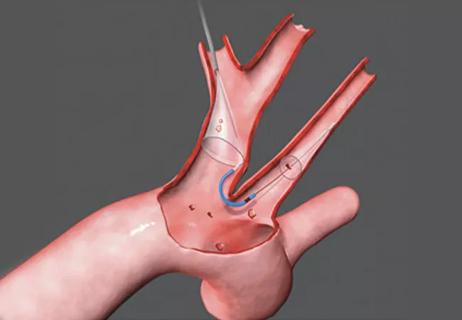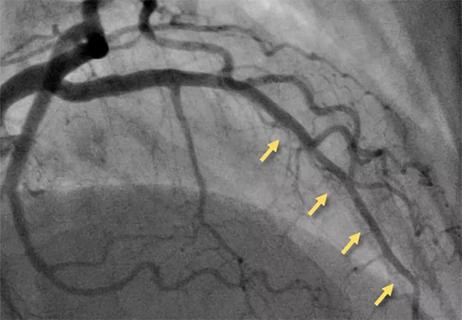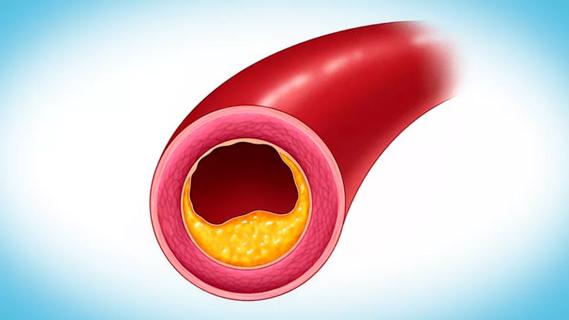Four-point protocol improves outcomes in high-risk patients, earns award for operational excellence

Implementation of a comprehensive ST-elevation myocardial infarction (STEMI) protocol — including targeting guideline-directed medical therapy, use of radial-first percutaneous coronary intervention (PCI) and pursuing door-to-balloon time goals — was associated with a 40% reduction in the incidence of STEMI-associated cardiogenic shock, according to a recent Cleveland Clinic study. The protocol was also associated with significantly improved infarct size, ejection fraction and in-hospital mortality rates in patients who presented initially with STEMI-associated cardiogenic shock.
Advertisement
Cleveland Clinic is a non-profit academic medical center. Advertising on our site helps support our mission. We do not endorse non-Cleveland Clinic products or services. Policy
The prospective registry-based study, published online in the American Journal of Cardiology, is one of a series of recent studies evaluating Cleveland Clinic’s comprehensive STEMI protocol; this is the first to focus on the impact of the protocol on STEMI-associated cardiogenic shock, an especially severe complication associated with high morbidity and mortality.
“Our experience highlights the importance of having a comprehensive approach to all patients presenting with STEMI rather than focusing specifically on modifying risk in those who already have the complication,” says senior study author Umesh Khot, MD, Vice Chairman of Cardiovascular Medicine at Cleveland Clinic. “Using this strategy, we were able to reduce the incidence of cardiogenic shock as well as improve outcomes in those presenting with it.”
Cardiogenic shock occurs in up to 13% of patients with STEMI. Although door-to-balloon times have improved nationwide and evidence has shown that timely PCI improves STEMI outcomes, the death rate of STEMI-associated cardiogenic shock has continued to increase.
Some research has found that patients presenting in cardiogenic shock tend to be treated differently initially and are less likely to be revascularized. Prior to the new study, the impact on cardiogenic shock of improving care delivery to all patients with STEMI was largely unknown.
Starting July 15, 2014, Cleveland Clinic implemented a four-step comprehensive STEMI protocol, consisting of the following:
Advertisement
All STEMI patients treated with PCI at Cleveland Clinic from January 1, 2011, to December 31, 2016, were included in the study. During that period, 723 patients were treated before the date of protocol implementation (the “control group”) and 549 were treated after implementation.
Overall, 137 patients presented with STEMI and cardiogenic shock: 94 (68.6%) were in the control group and 43 (31.4%) were in the protocol group.
Care delivery metrics were compared before and after the date of protocol implementation, with significant improvements found in use of transradial PCI (9.6% vs. 44.2%; P < 0.001) and in door-to-balloon time (129 vs. 95 minutes; P = 0.001) after protocol implementation. Administration of guideline-directed medical therapy was statistically similar before and after the protocol (89.4% vs. 97.7%; P = 0.172).
Among all STEMI patients, the incidence of cardiogenic shock within 24 hours of PCI decreased from 13.0% before the protocol to 7.8% after protocol adoption (P = 0.003).
Outcomes among patients who presented with STEMI-associated cardiogenic shock were separately analyzed, with the following pre-/post-protocol results found:
Advertisement
“Implementation of a four-step comprehensive STEMI protocol was associated with a 40% reduction in the incidence of STEMI-associated cardiogenic shock,” summarizes Dr. Khot. “Among patients presenting with STEMI-associated cardiogenic shock, use of the protocol correlated with reductions in infarct size of more than 30% and in-hospital mortality of over 50%.”
“The exact mechanisms of this benefit are difficult to ascertain, but improved comprehensive management of STEMI, even post-procedure, may have contributed to better overall outcomes,” adds study co-author Samir Kapadia, MD, Chair of Cardiovascular Medicine at Cleveland Clinic.
The authors note that despite immediate early in-hospital survival gains with protocol adoption, one-year mortality in the cardiogenic shock cohort remained high, at 34.2%. Dr. Khot says this finding was puzzling, as most of these patients were discharged without severe left ventricular systolic dysfunction. Some evidence suggests that long-term mortality in this group is largely from noncardiac causes, although why these patients may be particularly vulnerable is unknown. The authors conclude that further study should also include long-term care strategies for patients discharged after STEMI-associated cardiogenic shock.
Overall, Dr. Khot concludes that this study supports a paradigm shift in caring for patients presenting with STEMI-associated cardiogenic shock. “In contrast to the tendency to view the complication of cardiogenic shock as an obstacle to optimal care delivery, these results show that providing guideline-driven systematized care to all STEMI patients can lead to improved outcomes,” he says. “This strategy offers an important solution to help address the gap in the care of these patients.”
Advertisement
In addition to the comprehensive STEMI protocol’s growing collection of supportive outcome studies (see additional examples at Catheter Cardiovasc Interv. 2020;96[2]:E165-E173, Circ Cardiovasc Interv. 2019;12:e007101 and J Am Coll Cardiol. 2018;71:2122-2132), the protocol was recognized with the “Best Achievement of Operational Excellence in Healthcare” award in the 2020 Business Transformation & Operational Excellence Industry Awards virtual ceremony in November 2020.
“In winning this award, our Cleveland Clinic team joined major corporations and other innovative enterprises from around the world who garnered recognition for operational excellence in various industries,” says Dr. Khot. “It is rewarding to see the value of our comprehensive STEMI protocol recognized both within and beyond the healthcare sphere.”
Advertisement
Advertisement

International experts provide a guide for rapid decision-making focused on transcatheter options

In the wake of NOTION-3 findings, a strong argument for physician judgment remains

TRISCEND II trial reports 1-year results

Post hoc analysis of PROTECTED TAVR finds reduced stroke risk in the U.S. but not beyond

SCAI document focuses on technical aspects of care where clear guidance had been lacking

Novel approach outperforms standard of care for post-PVI stenosis and occlusion

Resourceful approaches to the care of patients with microvascular disease and elevated Lp(a)

Support for a TAVR-first approach in patients with concurrent valve and coronary disease